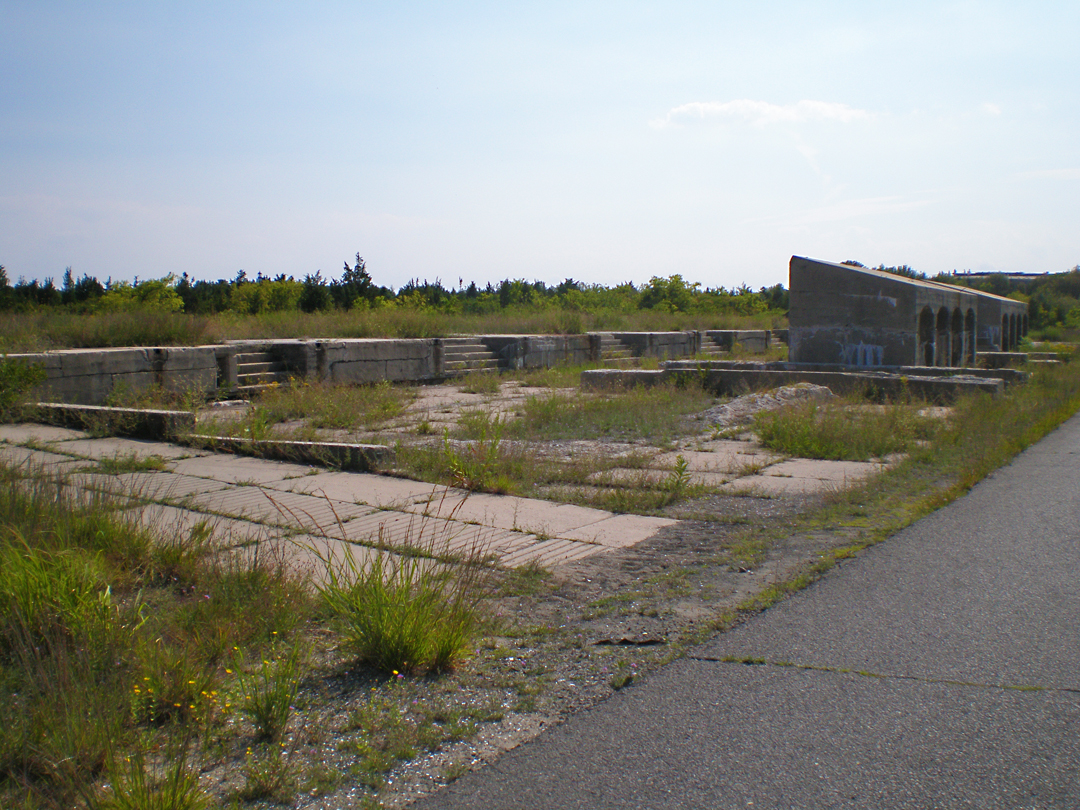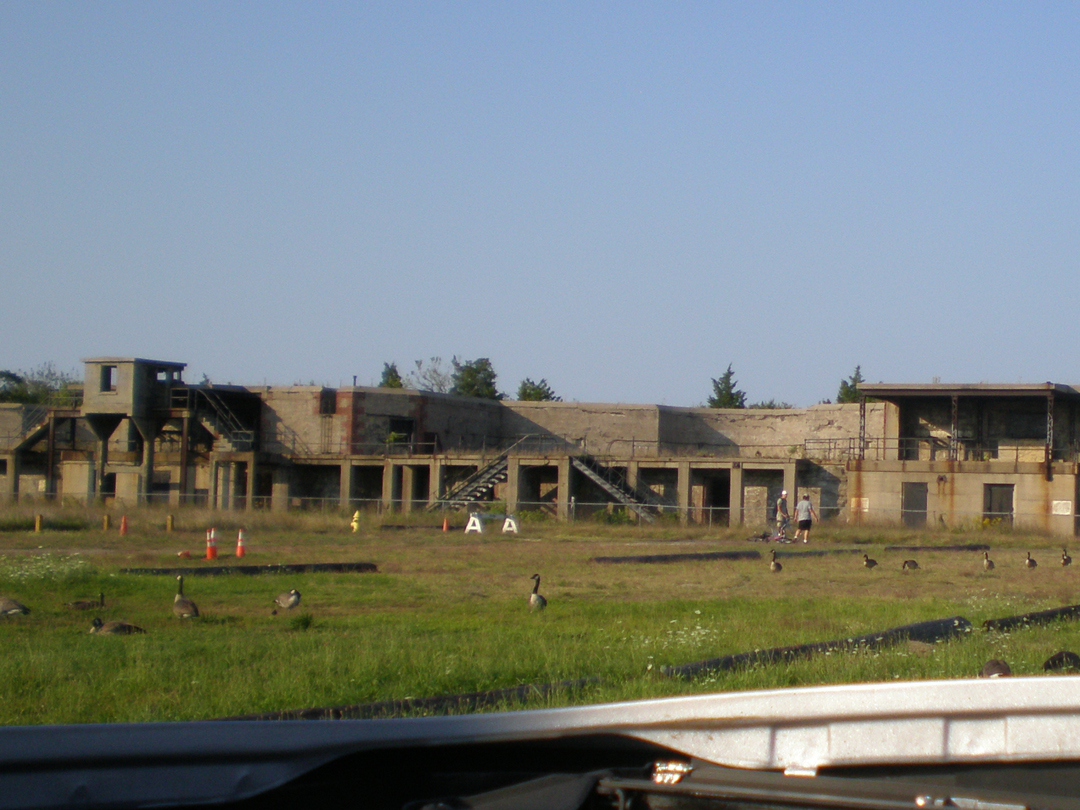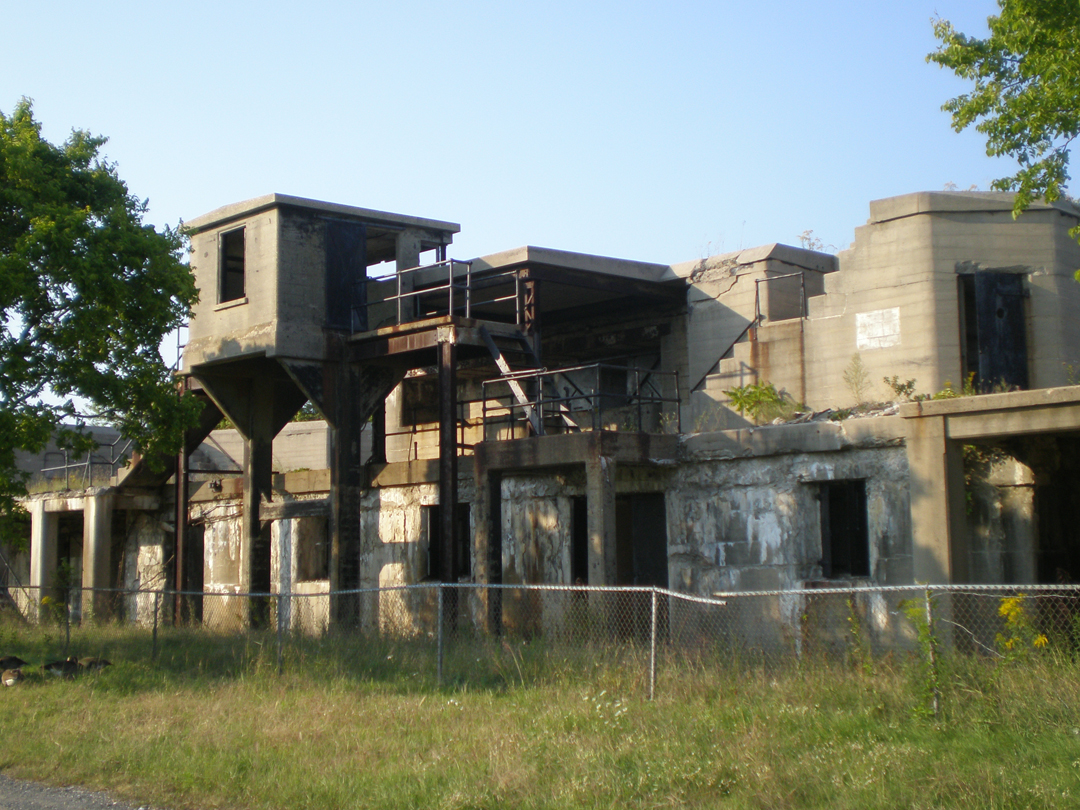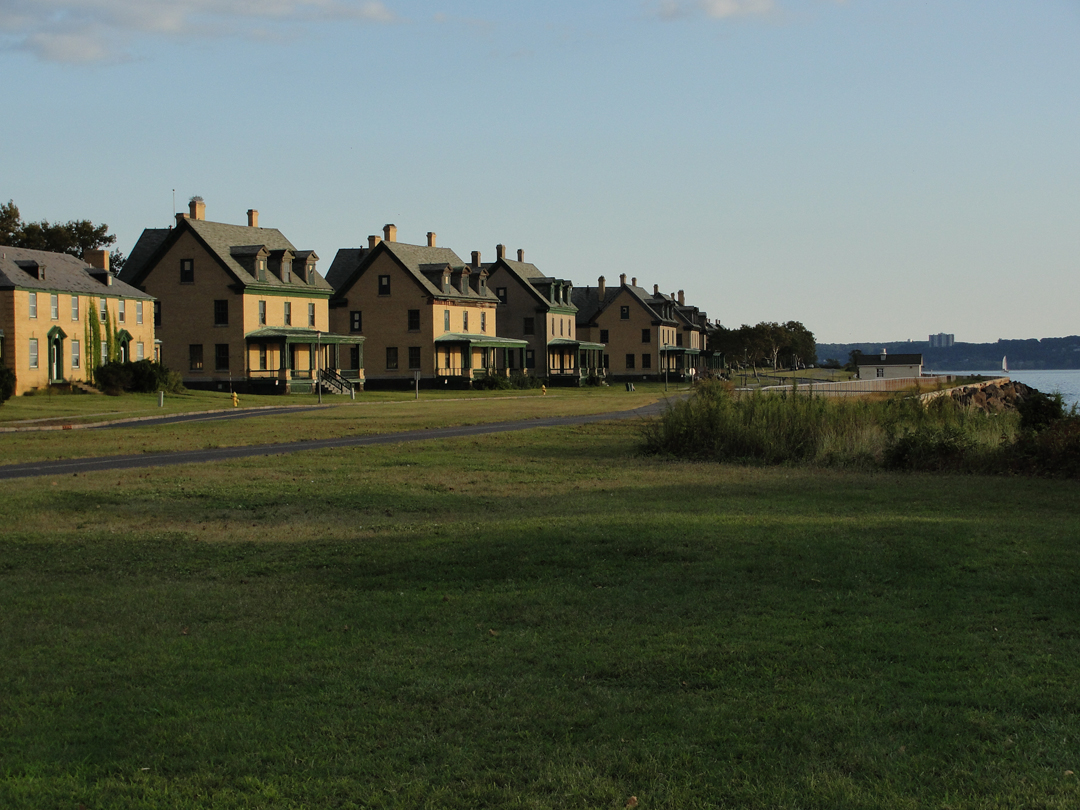Now part of the National Park Service's Gateway National Recreation Area, Sandy Hook and what would become Fort Hancock have been part of the New Jersey/New York experience since the colonial era.
As can be seen on the map, and as used in the 500LA advert, Sandy Hook projects north and west from the Jersey Shore to create the southern "gate post" into New York's Lower Bay. By defining the lower part of the "gateway" into the Bay, Sandy Hook was also seen as an indeal location for the first line of harbour defense, and what would become Fort Hancock was established as a site to fire upon enemy warships if they menaced the approaches to the Bay.
The remote location (remote in the 1860's at any rate) was also seen as ideal for artillery proving, and the army tested its guns, some of them very large, at Fort Hancock until after the First World War. The defense capabilities were also increased to include very large batteries of guns and mortars, active through the Second World War.


Some of the remains from Sandy Hook's proving ground days, and the NPS placard describing some of the action that went on there, with a photograph contemporary to the army's actions.

The Nine-Gun Battery: protected on the ocean-side with mounds of sand, this battery once mounted nine long-range heavy guns just in case an enemy fleet attempted to gain New York's Bays. The photos below are indicative of the unfortunate condition of the battery. But it was built in 1902 - so it's over an hundred years old. Where does the time go?


The site was also part of the Cold War, and was home to radar-guided missle batteries until the 1970s when the hook was turned over to the National Park Service. Eventually, many plots about the Bays were conglomerated into the Gateway National Recreation Area, and now support sight-seeing, birding, swimming, hiking, and history.
For me, visiting was similar to my trips to North Carolina's Outer Banks, and Sandy Hook became one of "those places I have to go to" at least once when I'm in Jersey. It was also the subject of a number of photographs, many of which are in the New Joisey section of this website, and it was probably inevitable that some of those photos would wind up in my photoillustrations. Like the grassy dunes seen above.
The buildings on the cover of Roesville are part of "officers' row," duplex units with a view over
Sandy Hook Bay and the Atlantic Highlands. While many of the buildings of the fort have been
repurposed, most of these houses have not, which seems a shame.

Offiers' Row, Fort Hancock
These buildings were especially hard hit during
the Storm, and most had supplemental supports
holding up their porches in 2013.
The environ in Calling in the Old Fortress is part of the mortar defense emplacement of the fort. The mortar battery was built as a set of four deep wells, with cement, brick, and sand to protect the crews and their guns from counter-battery fire.

As it appeared in 2008, one of four emplacements of the mortar battery at Fort Hancock. This one was accessable to the public; at the time, the other three were deemed unsafe as the infrastructure has crumbled significantly since the
early 20th C.











